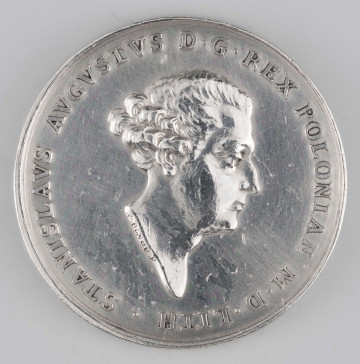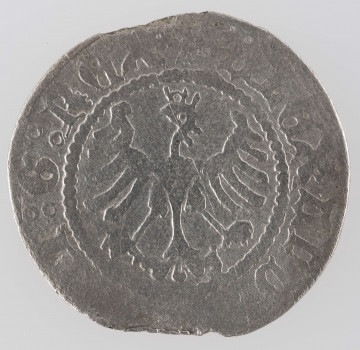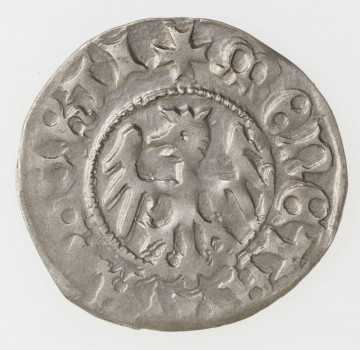
Stanisław August Poniatowski - coronation medal
1764
National Museum in Lublin
Part of the collection: Money on Polish territory in the Middle Ages
With the collapse of the early Piast monarchy during the reign of Mieszko II (1025-1034) money production ceased in Poland. It was resumed by Bolesław the Brave (1058-1079) at the end of the 60s of the 11th century, introducing into circulation denars of several iconographic types, which divide the period of his reign into princely and royal. The princely reign is illustrated by a denarius depicting the ruler on horseback without insignia, whereas the royal reign is illustrated by an issue depicting the ruler in profile with a sword pointing upwards and a building topped with three domes on the reverse, struck at the Kraków mint after the coronation in 1076.
The image of Bolesław the Brave presented on this coin does not reflect his likeness and individual features. It is a symbol of the ruler, showing his dignity through the meaning of the coronation insignia – the crown and the sword. The crown expressed the idea of the sovereignty of the state and its unity, it pointed to the divine origin of power. The sword was a symbol of strength, courage and all the virtues of chivalry; when raised, it showed the ruler's readiness to defend the state and the Church; it expressed justice and judicial supremacy. The building depicted on the reverse has a sacral character. It is not clear, however, whether it is an image of a specific temple, e.g., the Krakow cathedral, or rather a symbolic representation – the Holy City or the heavenly homeland to which the people are supposed to go under the guidance of the Christian king.
Behind the refined symbolism there was a down-to-earth state economy. The issuing of coins generated income by adding more and more copper to the minting alloy. Thus, while the ducal denarius contained around 0.335 g of silver, the royal issue was less than half that. These were depreciated coins, issued in quantities never seen before in Poland, in an edition of around 2 million copies. To hide the low purity of the silver, they were boiled in a solution of table salt and tartar. This led to the removal of copper from their surface, leaving only silver. The circulation of these coins was limited to the Lesser Poland region. The discussed piece probably comes from the hoard from Karczmisk, hidden after 1135, which originally contained 4504 coins. The issues of Bolesław the Brave were in use for several dozen years, until the end of the reign of Bolesław the Wrymouthed († 1138).
Tomasz Markiewicz
Author / creator
Dimensions
cały obiekt:
Object type
numismatic
Technique
stamp minting
Material
silver
Creation time / dating
Creation / finding place
Owner
The National Museum in Lublin
Identification number
Location / status

1764
National Museum in Lublin

1502 — 1506
National Museum in Lublin

1492 — 1499
National Museum in Lublin
DISCOVER this TOPIC
National Museum in Lublin
DISCOVER this PATH
Educational path